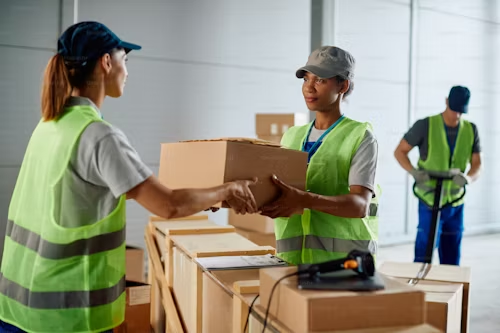The strategic location, excellent transportation infrastructure, and expanding trade volumes of Latvia make it an ideal place to start a distribution and logistics business. As a crucial bridge connecting Eastern and Western markets, Latvia provides a welcoming environment for companies engaged in logistics and distribution. This article offers a thorough review of the important factors to take into account when establishing a distribution and logistics business in Latvia.

Commercial analysis
To determine Latvia’s important industries, trading patterns, and market demand, do a detailed market analysis. Analyze the market environment, spot any gaps or underserved regions, and comprehend the logistics requirements of companies doing business in Latvia. Your ability to properly tailor your services to the needs of the market will be aided by this understanding.
Infrastructure for transportation
Benefit from the well-developed transportation infrastructure in Latvia, which includes a vast road network, a connected rail network, and effective seaports. To streamline your distribution and logistics processes, be aware of the advantages and disadvantages of each mode of transportation. Take into account elements like accessibility to global markets and closeness to important transportation hubs.
Storage and warehousing facilities
Analyze Latvia’s warehouse and storage capacity as well as its suitability. When choosing warehouse partners or building your storage facilities, take into account aspects like capacity, location, security, and technological infrastructure. Your capacity to handle items effectively will improve if you have access to contemporary, well-equipped warehouses.
Trade laws and regulations
Learn about the documentation requirements, trade laws, and customs processes in Latvia. Recognize the procedures involved in import- and export-related activities, such as customs clearance, tariff classification, and adherence to trade laws. For smooth cross-border transactions, develop good ties with customs brokers or advisors.
Digital and technological solutions
To improve your operations, embrace digital technologies and logistical solutions. To improve productivity, increase visibility, and streamline procedures, spend money on inventory management software, warehouse management systems, and transportation management systems (TMS). Utilize real-time tracking, data analytics, and automation to provide your clients with exceptional logistical services.
Competent workforce
Develop staff with knowledge of supply chain management, logistics, and transportation activities. Hire people that are knowledgeable about regional logistical methods, global trade, and legal needs. To ensure that your workforce is up to date on market trends, technologies, and best practices, offer continuing training.
Collaboration with regional transporters and suppliers
Form alliances with regional carriers, freight forwarders, and suppliers to benefit from their networks, skills, and understanding of the regional market. Your capacity to offer end-to-end logistics solutions, such as transportation, warehousing, and last-mile delivery, will be improved by working with dependable partners.
Put the consumer first
Exceptional customer service can help your distribution and logistics business stand out from the competition. Build trusting relationships with your customers, learn about their unique demands, and customize your services to fit those needs. To increase client satisfaction, provide value-added services like order monitoring, supply chain visibility, and personalized reports.
Added-value services
Offer value-added services like kitting, labeling, repackaging, and assembly to set your business apart from the competition. While relying on your skills for value-added activities, these services can help organizations streamline their operations and concentrate on their core capabilities.
Sustainability strategies
Your distribution and logistics businesses should adopt sustainable techniques. Encourage environmentally friendly activities like streamlining transportation routes, cutting emissions, and putting in place waste management strategies. Promote green logistical choices and emphasize on sustainable packaging to draw in clients who care about the environment.
Management of risks and insurance
Reduce potential hazards by putting in place thorough risk management plans and acquiring enough insurance coverage. Defend your company and your clients from threats including theft, damage, delays, and natural calamities. To determine the best options for coverage for your distribution and logistics business, speak with insurance experts.
Conclusion
It’s crucial to carefully assess industry trends, infrastructure capabilities, legal requirements, and customer requests before starting a distribution and logistics business in Latvia. Through market research, technology adoption, strategic partnerships, customer focus, and sustainability efforts, your distribution and logistics business can flourish in Latvia’s competitive landscape and contribute to trade growth.
You can also find these articles helpful
Moving a Stock Company Address to Latvia
Transformation of a foreign representation into a branch
Transformation of sole dealers, farms, and fishing undertakings into LLC in Latvia







